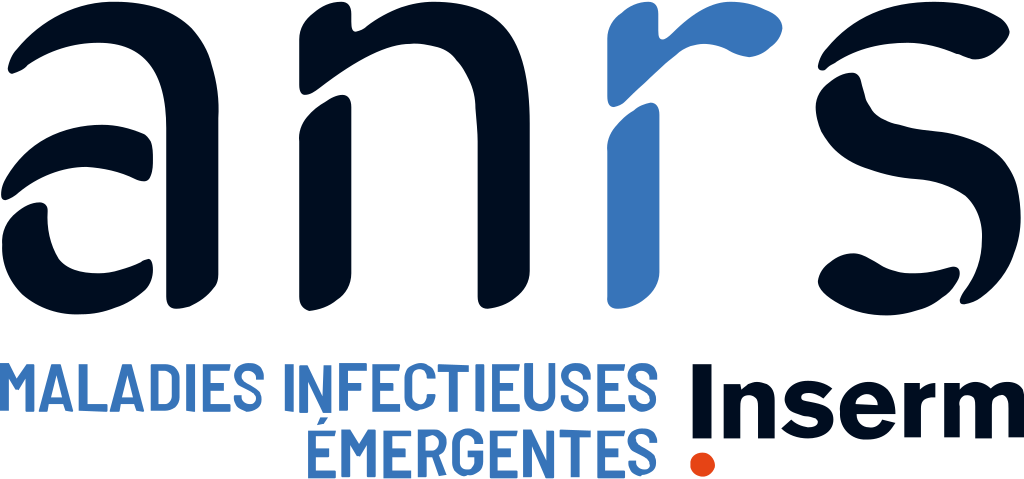HIV TROPISM
DETERMINATION OF HIV-1 TROPISM
The genetic determinants of coreceptor usage reside in the HIV envelope, in particular, the V3 loop. Consequently, this region is highly useful for the training and development of computerized genotypic predictors of coreceptor usage, which have the potential to make the screening and testing of HIV-infected patients (1).
Determination of HIV-1 tropism by bioinformatics-based genotypic rules, such as support vector machines (SVMs) is now available.
For HIV-1 subtype B, the bioinformatic algorithms based using HIV V3 genotype data were able to achieve high concordance with the phenotypic assays, approaching the degree of agreement between phenotype assays themselves (2-4). The specificity of tropism genotypic assays is high to detect X4 or R5X4 viruses. This can be done on HIV RNA, as well as on HIV DNA (5, 10).
A false positive rate adjusted at 10% with geno2pheno provides the best balance between specificity and sensitivity for predicting the X4 or R5X4 tropism (6-9).
Geno2Pheno (FPR: 10%) has been validated for HIV-1 subtype B and subtype C (11).
Geno2Pheno (FPR: 5%) has been validated for HIV-1 subtype CRF02-AG and subtype D (13, 14).
For other non-B subtypes, the FPR at 10% can be used to keep a better sensitivity for predicting X4 strains. A phenotypic method can also be performed by an expert laboratory.
To go to Geno2Pheno (SVMs): http://coreceptor.bioinf.mpi-inf.mpg.de/index.php
For HIV-1 subtype CRF01-AE the following algorithm can also be an alternative.
| HIV-1 subtype | Genotypic rule for tropism prediction1 |
| Subtype CRF01-AE (12) | (i) R or K at position 11 and/or K at position 25 of V3 (ii) R at position 25 of V3 and a net charge of ≥+5 (iii) a net charge of ≥+6 (iv) loss of the N-linked glycosylation site2 in V3 and a net charge of ≥+4 |
1 One of the following criteria is required for predicting CXCR4 coreceptor usage
2 The glycosylation site is NXT with X for any amino acid; the site is lost if the NXT motif is mutated
Note: The V3 net charge is calculated by subtracting the number of negatively charged amino acids [D and E] from the number of positively charge ones [K and R]
1/ Lengauer T, Sander O, Sierra S, Thielen A, Kaiser R. Bioinformatics prediction of HIV coreceptor usage. Nat Biotechnol. 2007 Dec;25(12):1407-10.
2/ Delobel P, Nugeyre MT, Cazabat M, Pasquier C, Marchou B, Massip P, Barre-Sinoussi F, Israël N, Izopet J. Population-based sequencing of the V3 region of env for predicting the coreceptor usage of human immunodeficiency virus type 1 quasispecies. J Clin Microbiol. 2007 May;45(5):1572-80.
3/ Skrabal K, Low AJ, Dong W, Sing T, Cheung PK, Mammano F, Harrigan PR. Determining human immunodeficiency virus coreceptor use in a clinical setting: degree of correlation between two phenotypic assays and a bioinformatic model. J Clin Microbiol. 2007 Feb;45(2):279-84.
4/ Soulié C, Derache A, Aimé C, Marcelin AG, Carcelain G, Simon A, Katlama C, Calvez V. Comparison of two genotypic algorithms to determine HIV-1 tropism. HIV Med. 2008 Jan;9(1):1-5
5/ Moores A et al. Improved detection of X4 virus by V3 genotyping: application to plasma RNA and proviral DNA. XVII International HIV drug resistance workshop: basic principles and clinical implications, 10-14 June 2008, Sitges, Spain, abstract 89.
6/ Recordon-Pinson P et al. Evaluation of the genotypic prediction of HIV-1 tropism versus a phenotypic assay and correlation with the virological response to maraviroc: the GenoTropism study. XVIII International HIV drug resistance workshop: basic principles and clinical implications, 9-13 June 2009, Fort Myers, Florida, abstract 111.
7/ Raymond S et al. Correlation between genotype prediction based on V3 sequence and phenotypic determination of HIV-1 tropism. AIDS 2008 22:1-6.
8/ Raymond S et al. Genotypic prediction of human immunodeficiency virus type 1 CRF02-AG tropism. J Clin Microbiol. 2009 Jul;47(7):2292-4.
9/ Harrigan PR et al. Screening for HIV tropism using population based V3 genotypic analysis: a retrospective virological outcome analysis using stored plasma screening samples from MOTIVATE-1. XVIII International HIV drug resistance workshop: basic principles and clinical implications, 9-13 June 2009, Fort Myers, Florida, abstract 15.
10/ Morand-Joubert L et al. Evolution of coreceptor tropism and V3 loop resistance mutations in the blood cellular reservoir after introduction of maraviroc. XVIII International HIV drug resistance workshop: basic principles and clinical implications, 9-13 June 2009, Fort Myers, Florida, abstract 129.
11/ Raymond S, Delobel P, Mavigner M, Ferradini L, Cazabat M, Souyris C, Sandres-Saune K, Pasquier C, Marchou B, Massip P, and Izopet J. 2010. Accurate Prediction of Human Immunodeficiency Virus Type 1 Subtype C Tropism by Subtype B Genotypic Determinants. JAIDS 53 (2), 167-175
12/ Raymond S, Delobel P, Rogez S, Encinas E, Bruel P, Pasquier P, Sandres-Sauné K, Marchou B, Massip P and Izopet J. 2013. Genotypic Prediction of HIV-1 CRF01-AE Tropism. J Clin Microbiol 51(2):564-70
13/ Soulié C, Fofana DB, Boukli N, Sayon S, Lambert-Niclot S, Wirden M, Simon A, Katlama C, Calvez V, Girard PM, Marcelin AG and Morand-Joubert L. 2016. Performance of genotypic algorithms for predicting tropism of HIV-1CRF02 AG subtype. J Clin Virol. 76:51-4.
14/ Dina J, Raymond S, Maillard A, Le Guillou-Guillemette H, Rodalec A, Beby-Defaux A, Giraudeau G, Vallet S, Mourez T, Payan C, Vabret A, Ruffault A, Ferre V, Izopet J and Plantier JC. 2013. Algorithm-based prediction of HIV-1 subtype D coreceptor use. J Clin Microbiol. 51(9):3087-9.

